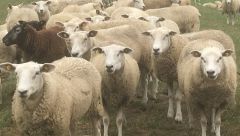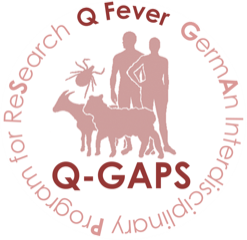Q fever outbreak at Charité in Berlin
 According to a news story published by "Berliner Morgenpost“ staff members were affected by a q fever outbreak at Charité in Mid-July 2021 after animal experiments with pregnant sheep. 20 staff members of the „Forschungseinrichtung für experimentelle Medizin“ at the Virchow Clinique were infected with Coxiella burnetii when carrying out the animal experiments.
According to a news story published by "Berliner Morgenpost“ staff members were affected by a q fever outbreak at Charité in Mid-July 2021 after animal experiments with pregnant sheep. 20 staff members of the „Forschungseinrichtung für experimentelle Medizin“ at the Virchow Clinique were infected with Coxiella burnetii when carrying out the animal experiments.
The trigger for the q fever specific diagnostics among staff members was obviously the detection of the pathogen in one of the experimental animals at the beginning of August 2021. At that time, it was possible to detect antibodies in staff members of the Charité, which indicated an acute q fever infection. Upon request by "Berliner Morgenpost“ the Charité pointed out that all individuals who became ill have recovered in the meantime.
In addition, a Charité spokesman stated that the experimental animals came from breeding facilities in Brandenburg, where no q fever has been detected so far. Clinical signs have been absent in the sheep and there hasn’t been any suspicion that the animals had been infected in the first place. Immediately after a first suspected infection within the Charité the holding of the research facilities was quarantined. Yet another consequence from the q fever outbreak is that stricter quality criteria regarding hygiene in the animal stock, supply chain and risk assessment will be paid attention to in future when purchasing animals, in order to reduce the risk of introducing zoonotic diseases. There hasn’t been any obligation to check for the agent of q fever in farm animals regularly, so far.
Remarks:
Fortunately, institutions from the Q-GAPS research project (National Reference Laboratories for q fever, human and veterinary medicine, Lower State Office for Consumer Protection and Food Safety, Food and Veterinary Institute Braunschweig/Hannover, (LAVES)) also contributed to the analysis of the q fever outbreak described above. Based on the experience and knowledge of the Q-GAPS partners a guideline is being drawn up which contains information including recommendations for action concerning the overall topic q fever. The article about the outbreak in an establishment for animal use cited here shows an example of the necessity and importance of such a professional gathering of information and consulting. Therefore, it should be taken into account as to whether further protective measurements have to be taken or procedures for risk mitigation have to be considered, if necessary, not only in holdings of origin but also in research projects along these lines using experimental animals. For example, a regular q fever monitoring in as well as in experimental animals would be advisable, especially, as q fever infections can often be asymptomatic.
Image Sheep: © Stiftung Tierärztliche Hochschule Hannover
Sources:
Berliner Morgenpost: Tierseuchen-Ausbruch an der Charité (for a fee)
BZ: Q-Fieber! 20 Charité-Mitarbeiter mit Tier-Seuche infiziert


